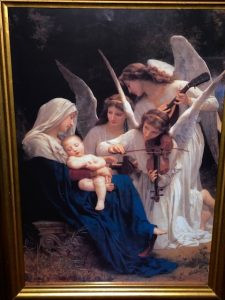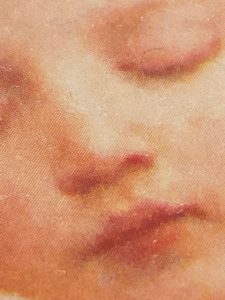
WAMC’s Vox Pop with Ray Graf, September 10th, 2019
WAMC’s Vox Pop with Ray Graf
Mark Lawson Antiques, Jewelry & Coin call in show Episode 5, September 10, 2019
Source: WAMC’s Vox Pop Antiques 09/10/2019
We had another interesting and enjoyable hour with Ray on V talking about a large collection of Chinese antiques we are cataloguing, historical autographed letters, the restrictions on selling endangered species taxidermy, creating blog posts for the show with show notes and more information, as well as an entertaining exchange regarding what sounded precisely like a “lamp with peenie”, “what?!”, “lamp with peenie”, long pause, “Ooooh, you’re saying PEONY”. The sound engineer almost hit the bleep button twice, lol.
This first post took much longer to get going than I expected! You will see I became more brief here as I passed the 7th or 8th caller. Switching over to more brief comments was the result of thinking that it may be interesting for people to listen to the actual exchanges. To facilitate, I have inserted time stamps for navigating directly to spots in the audio recording that interest you. Please let me know if you have any suggestions to make these types of posts or the show better.
Caller #1 (03:15) had a framed oval picture that his father, a firefighter, probably brought back from World War Two. We see all sorts of things that returning servicemen brought back with them, souvenirs as well as firearms, uniforms and insignia, for which there is a good market.
This could have been a print or an original work of art, I advised the caller to look at image under magnification for signs of pixelation (little dots), an indication of it being a print.


Caller #2 (06:00) had a note inscribed to an ancestor from Alfred Lord Tennyson, Poet Laureate of the British Kingdom for a good part of the nineteenth century. Interesting, but of relatively modest value; it might sell in the current market for $150-200. Interesting or historically important content can make a significant difference in value.
Ray asked how can you tell if something is genuine and not a forgery. This can be very tricky. I usually start by getting a history from whoever has brought the item in which can point me in one direction or another. Usually, if there is a long family history I will lean more in the direction of an autograph being possibly authentic. If something was recently purchased on eBay or at a local estate sale, I am more skeptical and look a little more closely. It is easy to mistake a printed version of an autograph or autographed manuscript with the real thing, as they can look virtually identical. To tell the difference, you can look closely at the writing itself to see if there is evidence of more pigment laid down or a path being ploughed as one line crosses another as a name or word is handwritten.
However, even with some history, there were some very talented forgers like Joseph Cosey, who expertly crafted forgeries of written documents by famous American historical figures such as George Washington and Abraham Lincoln from 1929 until the 1940s. His forgeries fooled the experts and some are still certainly in circulation as being authentic.
Caller #3 (11:30) had emailed an image of a brown glass bottle that had been dug up. It was antique, but a common type of 19th century blown-in-mold wine bottle worth $10-25 today. Still not bad for digging it up in the backyard. I dug up hundreds out Grand Avenue in Saratoga Springs with my friend Denny when I was a kid. It was like treasure hunting for us. Bottles that can have especially good value are early American flasks (often with patriotic themes), spring water bottles (Saratoga!), common hand blown or blown in mold bottles in an unusual color, and old bitters bottles.
What? The National Bottle Museum is right here in Ballston Spa?
Caller #4 (12:15) had a small safe, I say small but from the size still probably 3-400 pounds+. In my world, value is often inversely proportional to weight and difficulty of transport. I see safes like these left behind in estate basements all of the time. They probably have at least $50-100 in scrap metal value, usually not enough value for the trouble or cost of moving. The last time I moved one of these small ones, I hired a tow truck. They wrapped the safe in chain and picked it right up. Not too expensive, they charged me perhaps $100. A larger safe will cost $500-1000 to move as a starting point. Best local firm is Burkins & Foley. On the other hand, a very small (like 14 inches high) attractive 19th century stencil decorated safe might sell for as much as $500, they are uncommon however.
Caller #5 (14:00) had the (now infamous) “Peony” decorated lamp. Marked Carlsbad, Austria, I think that it probably dates to around c1900 based on the description. Depending on the style of the lamp, this could have a little bit of value. Nicer quality Art Nouveau designs can be strikingly beautiful, having good values and better demand.
Caller #6 (18:05) was looking for information about porcelain figurines made by a German company called Metzler & Ortloff. I remember attempting to research a charming and whimsical Art Deco figurine in the early 1990s by the company and being completely stumped. This was before the internet and there was no centralized connection to all knowledge the way we have today, right in our pockets no less.
Caller #7 (22:05) was the “Oh my goodness, what can I tell this guy?” caller. He had a case full of antique taxidermy, including many birds. In the past, federal and state agencies have been very aggressive about enforcing prohibitions on the sale of products made from endangered species of any type. The stories in the antiques trade were legendary. After the show, I thought I would do a little research. It appears that if you possess an item made from certain endangered wildlife that dates to before 1973, you can apply for a permit at no cost that would allow you to sell it.
Caller #8 (25:35) had a Currier & Ives print “A Virginia Home in the Olden Times.”
Caller #9 (30:00) had what sounded like a nice quality 19th century dish decorated with raised enamelled designs. Once very desirable, much less demand today.
Caller #10 (31:50) had a group of silver plated items. By law for over 100 years, anything manufactured for sale in the US from solid silver is required to be marked “STERLING”. Today, unless of a particularly beautiful design or form, or by a particularly desirable maker, or of historical interest, silver plated items generally are recycled. The value in that case derives not from the silver content which is tiny, but rather from the value of the metals underneath the silver plating, usually copper and nickel.
Caller #11 (33:45) had World War 2 medals awarded to civilian family members by Winston Churchill. Provenance is everything and a story always adds value, sometimes the story is most of what creates value. Even if you don’t have documentation, write down everything you know with names, dates, etc.. and keep with object so that the history does not get lost.
Caller #12 (35:20) had what sounded like a wonderful collection of antique botanical and wildlife prints including 19th century Audubons. She was planning for her estate and liquidation of the collection. It’s very important the way that the current market has changed, that care is taken with a large collection that includes both high value and lesser value works. Generally, a higher value sales venue will pull up lower value items and visa versa. Expert advice is invaluable to maximize returns.
Caller #13 (38:20) had Ronald Reagan autographed stationary from when he was a paid spokesperson for General Electric. Presidential autographs usually have the most value when they have been created when the person was in office as president. Take great care, because of the demands of being president, secretaries and then mechanical devices (auto-pens) signed many presidential documents and letters beginning with Harry Truman.
Caller #14 (40:35) had an Edison cylinder player with more than 100 cylinders. One of the first mass produced devices for playing music on reproducing media. Spring driven, powered by elbow grease and a crank. The sound was amplified with large metal “Morning Glory” horns that were sometimes beautifully decorated.
Our last caller that we had time for, Caller #15 (44:05) had a curious thing that took me a little bit to figure out. It was a board of some type with a label “Leatherboard”. Hmm… it turned out to be a type of board that was manufactured in the early 20th century from bits of leather.
It was an enjoyable show for me and, we again left more than a few callers still waiting to talk. Please remember that you can always send your questions (with images if you like, they can be very helpful) to us here, and feel free to call us at (518) 587-8787.
Thanks to WAMC and everyone who called. I look forward to all of your interesting questions, objects and stories.
Mark
Antiques, audubon, autograph, ballston spa, bottle, China, Chinese antiques, lamp, leatherboard, porcelain, print, ronald reagan, safe, Saratoga Springs, silver, taxidermy, thomas edison, voxpop, wamc, winston churchill, world war two
